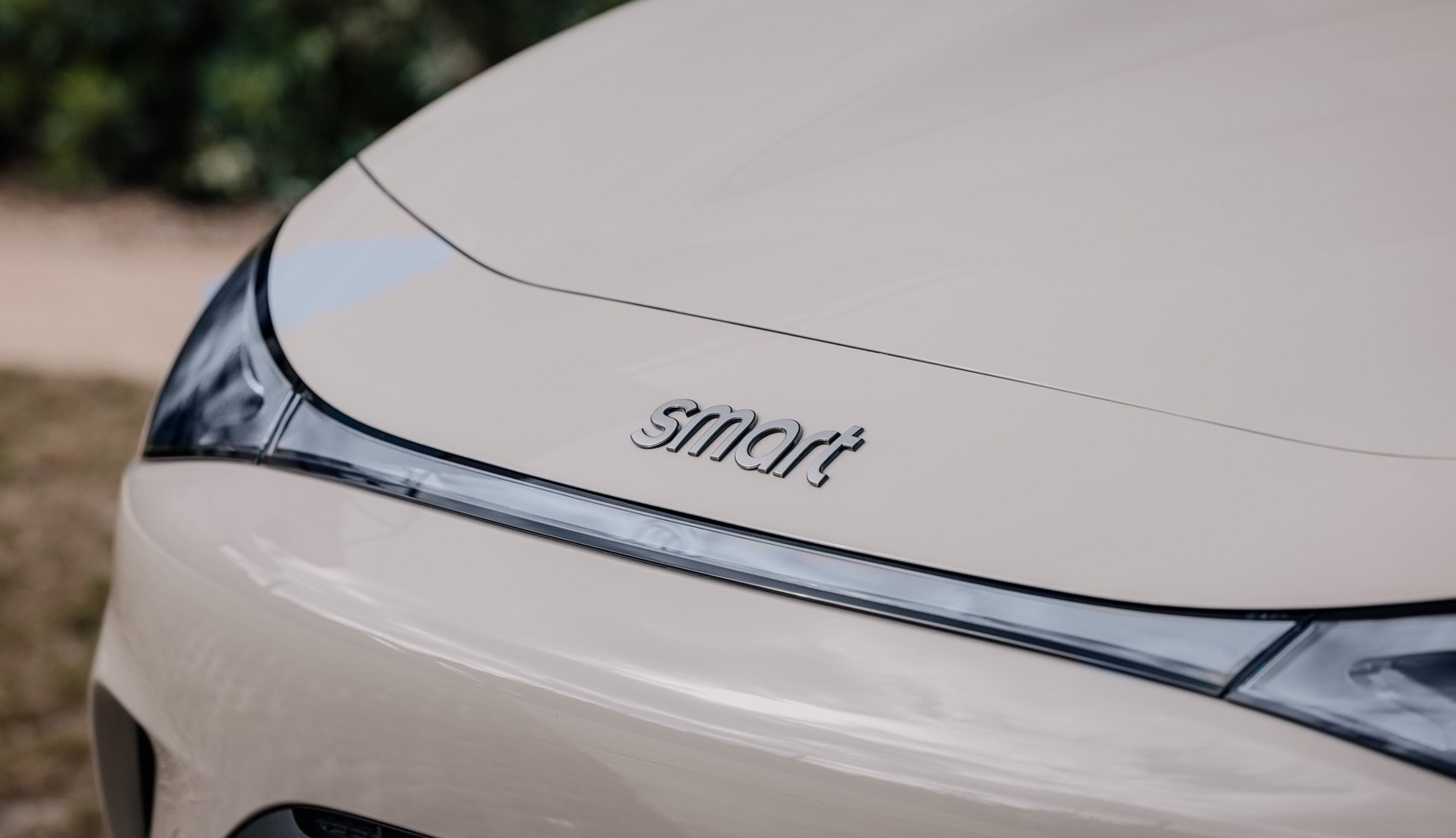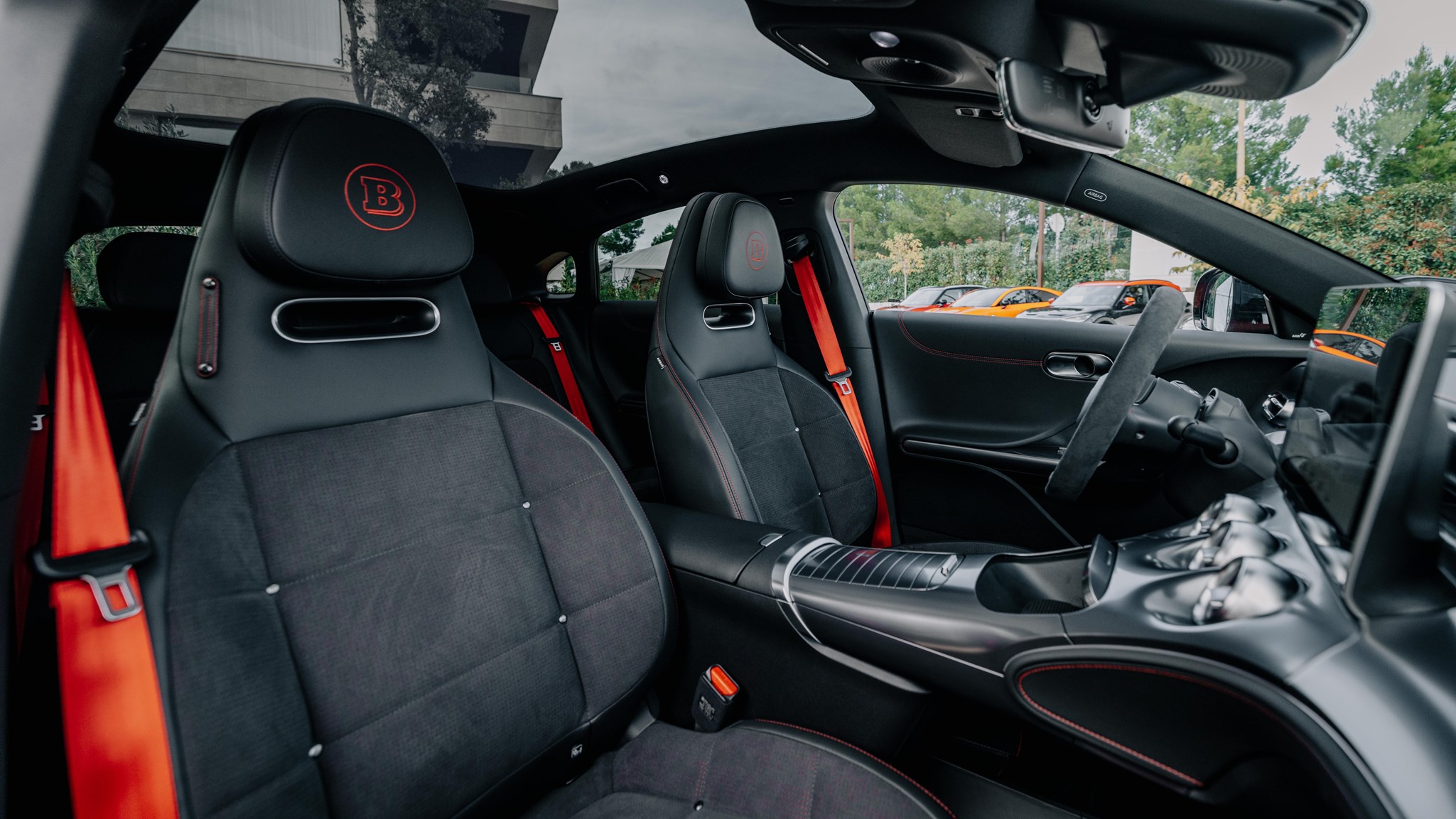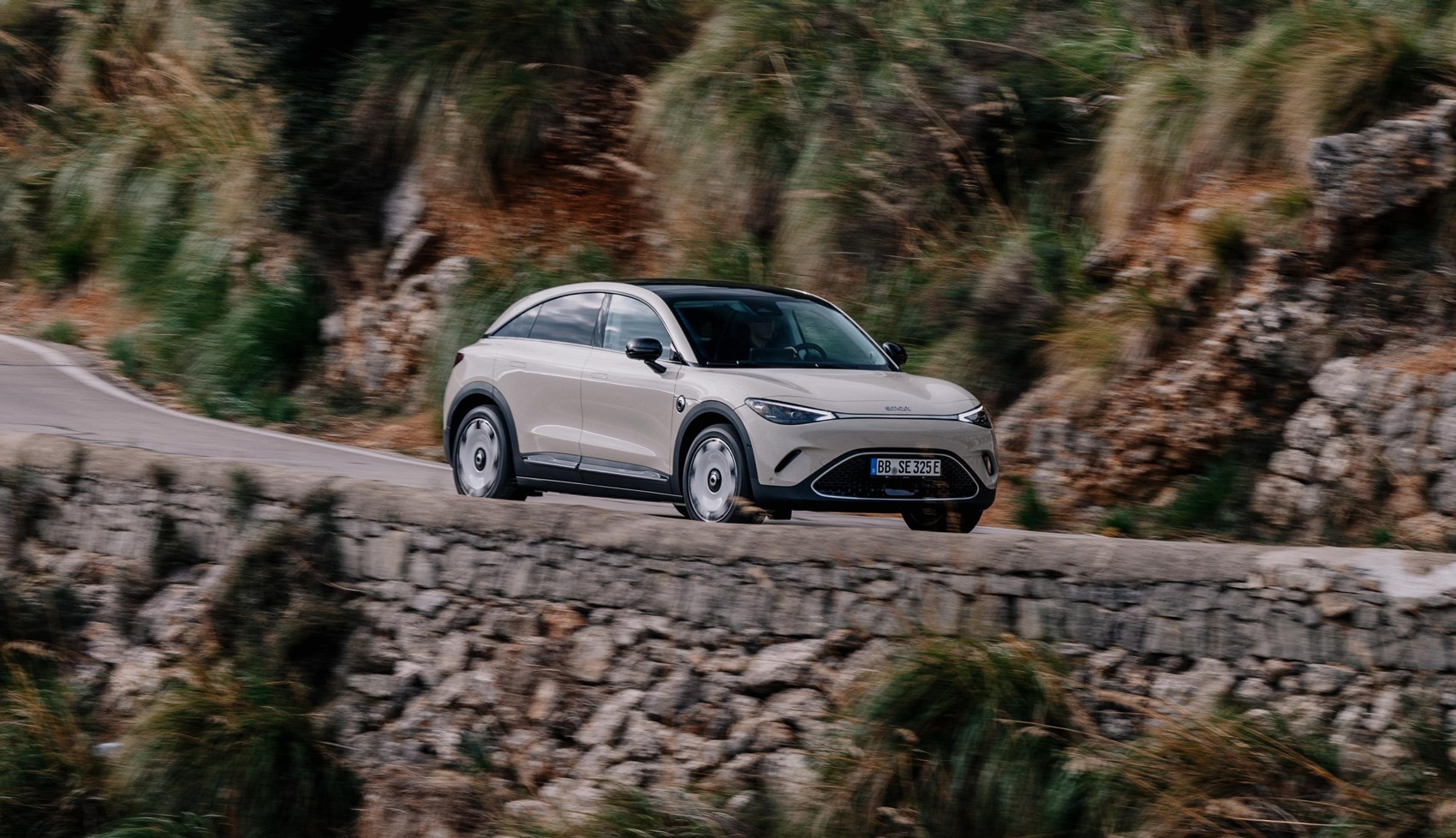► Our Smart #3 electric SUV review
► We drive Brabus and regular #3 models
► Priced from £32,950 in the UK
Yes, yes… we know. This is about as far away from being a Smart as you could get. But the joint venture between Mercedes-Benz and Geely is designed to make Smart a proper player in the car market, rather than just an interesting footnote in its history.
The #3 is designed to help with that, by getting the name in front of more faces than ever before. We’ve driven in in Europe and the UK in Premium and spicy Brabus versions.
At a glance
Pros: Smooth and quiet, great interior space, quick to charge
Cons: Irritating driving tech, fiddly screen, no coasting function, average boot space
What’s new?

Whereas the #1 clung to the original Smart’s space efficiency – it was a sub-4300mm long SUV with E-Class levels of space after all – the #3 is one of those oh-so-desirable coupe SUVs that also happens to be fully electric.
Before you comment you’d rather eat your own feet than drive something like this, sales figures of these SUVs made less practical suggest that you are very much in the minority here. At least Smart hasn’t angled the tailgate and left it at that. The roofline and suspension are lowered, wheelbase stretched and there’s a more rakish nose and tail, too.
We’ll let you decide how successful Smart has been, although it’s worth pointing out that it’s more handsome in the metal than in pictures. The rest of the #3 is a lot more familiar – no surprise given that it’s on the same platform as the #1.
What are the specs?
There are four mainline specifications for the #3: entry-level Pro (priced from £32,950), longer-legged Pro+ (£36,950), upper Premium (£39,950) and high-performance Brabus (£45,450). We’ve tested the Premium and Brabus models here.
Pro already has a good amount of equipment (like automatic LED lights, auto climate control, powered tailgate) but features a 49kWh lithium ferro-phosphate battery rather than a 66kWh nickel-cobalt-manganese one, meaning a more limited range of 202 miles and a max charging rate of 130kW. Pro+ adds that 66kWh battery pack for a larger claimed range of 270 miles and faster 150kW charging, but little extra equipment.

You’d need to step up to Premium (pictured in white) to benefit from a heat pump in the battery pack to help with efficiency, and the Premium also benefits from 22kW AC charging (instead of the lower trim’s 7.4kW) and a claimed range of 283 miles. Additional equipment here includes a Beats audio system, two-zone climate control, adaptive headlights, a more sophisticated parking assistance system and different wheel designs.
Pro, Pro+ and Premium are all rear-wheel drive, with a single 268bhp e-motor driving the rear wheels – good for a 5.7sec 0-62mph sprint.

And then you get to the mighty Brabus (pictured in orange). As well as its own exterior and interior design elements including larger wheels and a smattering of different colour choices, the main difference with the Brabus model is the addition of a motor on the front axle, for electric all-wheel drive and a potent 422bhp, good for a frankly silly 3.7sec 0-62mph time. It comes with a penalty of a smaller claimed range, though – down to 258 miles.
All models top out at 112mph.
What about the interior?

Inside, the dash is largely the same as the #1, which, quality-wise, is no bad thing at all. Plenty of solid materials and an interior that feels well-built and up to date. Storage up front is good, and the cubby under the central armrest is even air conditioned to stop your supply of road chocolate going all melty. The seats are also very comfortable, feeling supportive yet soft at the same time – and they look good, too.
But, also like the #1, one of the #3’s biggest snags is the technology and infotainment on board. In its favour, the central screen is large, glossy and quick to respond to inputs – and it’s flanked by a small driver’s instrument cluster and head-up display. But the infotainment is rather busy, and takes some time to get used to – with slightly wacky graphics and a pretty pointless animal mascot (this time a cheetah, rather than a fox like in the #1).

Ditto the safety and driver assistance tech on board; most of it is either badly calibrated or belligerent. Some of it we have to grudgingly forgive; just like every other manufacturer, Smart has been enforced into adding things like an annoying speed warning sound or a driver monitoring system that aims to stop you being tired or distracted (but can just shout at you for looking in the wrong direction) in order to comply with General Safety Regulation 2 rules.
But some of the clunkiness is pure Smart; the powered doorhandles are needlessly fiddly, the adaptive cruise’s distances are hilariously far away and the speed limiter won’t actually do the speed you set it to (it’ll do 71 when you’ve set it to 70mph, for example).

All versions get a panoramic roof as standard that opts for a heavy tint rather than a roller blind, saving weight and improving headroom. It’s not what you’d call generous, but it should be more than adequate for most. Legroom impresses given the length of the #3, but the boot is on the small side and can’t be extended by sliding the rear bench forward like in the #1.
How does it drive?
We’ve tried the Premium model in the UK, and the Brabus model in Spain.
Our experiences of the #3 in the UK have proven that it’s a very smooth, calm and relatively collected place to spend time.

Performance from the single e-motor has a satisfying surge, and the driving experience has an overall level of solidity to it. That said, as much as we welcome the smooth regenerative braking and feelsome brakes into the driving experience, the always-on regen can feel tiring on the motorway. We’d love to see a no regen/coasting function added to the car (we know it’s possible, as Smart has added features to its cars via over-the-air updates) to make motorway driving a little less harsh on your right leg.
The steering isn’t exactly brimming with feel, yet there’s a weight and precision that builds confidence and helps you place the car exactly where you want it. You can adjust the level of weight to the steering, which is a neat bonus, but it’s generally not that communicative a system anyway.

The general ride quality is fine, if not amazing, with the #3 particularly excelling at higher speeds with a very quiet cabin even at motorway speeds and a reasonably refined ride.
What about the Brabus one? Well, where the #1 Brabus was borderline scary when you tried to use the performance on squiggly roads, the #3 is actually quite entertaining. Rather than try to make it feel like more humdrum versions in most scenarios, Smart has listened and stiffened things up a bit. The changes aren’t huge, but with the lower ride height and roofline factored in there’s a far greater feeling of control.

Instead of flopping into corners before clumsily scrabbling out again, the #3 Brabus feels much sharper. There’s less roll and a much better purchase on the surface, while you can really feel it working the rear motor hard to help the car rotate on corner exit. It won’t do silly skids even with everything off, but there’s enough movement to make it feel a bit more engaging. Think Golf R (minus the drift mode) and you won’t be a million miles away.
Before you buy
The sub-£40k electric crossover is a growing market. So, as well as the #3 having to compete with the brand’s own #1 (which is only slightly smaller overall, and drives in largely the same way), cars like Volvo’s EX30 or the much larger (and very well-liked) Skoda Enyaq come into view for similar money.
Verdict: Smart #3

Can you kind of get the gist of what we’ve been getting at? For the most part, the #3 is perfectly reasonable. Smooth, quiet, calm and collected to drive – albeit when you’re not being irritated by the sometimes-infuriating safety tech is screaming at you for one reason or another. The interior is well built, it’s remarkably quiet even on the motorway – chalk some of that up to the car’s sleek proportions – and its very roomy in the cabin despite its low profile.
The Brabus model is commendable and feels like a much more complete product than the #1’s Brabus version, but the power offered is still silly. The rest of the range is easier to recommend, but the #3 is still a perfectly-fine-if-not-amazing-in-any-area kind of car hampered by clunky tech.
Specs are for a Smart #3 Premium